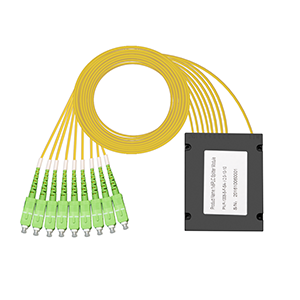IP addresses play a key role in network communications. This article will focus on the concept of wide area network (WAN) IP addresses. We will first define the role of IP addresses and introduce their types. Next, we will explain the characteristics and allocation methods of local area network (LAN) IP addresses. Then, we will define the characteristics of WAN IP addresses and explain how to obtain them. Finally, we will explain the status of WAN IP addresses in the network and explain their importance, including achieving wide area network connectivity and supporting Internet-based applications and services.
The Basics of IP Addresses
An IP address is a unique identifier assigned to each network device for positioning and communication in the network. It is divided into two formats, IPv4 and IPv6, and transmits data through network protocol packets to achieve effective data exchange between devices.
The role of IP address:
IP address (Internet Protocol Address) is the unique identifier of network devices in IP network, and has the following two main functions:
(1) Identify the identity of network devices:
- IP address is used to identify the identity and location information of each device in the network.
- IP address can be used to distinguish different devices and implement addressing.
(2) Implement communication between devices:
- IP address provides the target address for data transmission between devices.
- IP address can be used to determine the sending target and routing direction of data packets.
Types of IP addresses:
Common IP address types include:
(1) IPv4 and IPv6 address formats:
- IPv4 addresses consist of 32 binary digits, usually expressed in dotted decimal format.
- IPv6 addresses consist of 128 binary digits, using a more concise colon-separated hexadecimal format.
(2) Public and private IP addresses:
- Public IP addresses are globally unique addresses assigned on the Internet.
- Private IP addresses are used within local area networks and cannot be used directly on the Internet.
Through the identification and addressing functions of IP addresses, network devices can communicate effectively in IP networks. IP addresses are the basis for achieving network interconnection.
Local Area Network (LAN) IP Address
Local Area Network (LAN) IP address is a unique identifier assigned to devices within a local area network for communication between devices. Private IP address ranges, such as 192.168.x.x or 10.x.x.x, are usually used to ensure internal communication and resource sharing within the local network.
Characteristics of LAN IP Address:
IP addresses used in a local area network (LAN) usually have the following characteristics:
(1) Usually private IP addresses:
- LAN IP addresses usually belong to the private IP address space, such as 10.0.0.0/8, 172.16.0.0/12, and 192.168.0.0/16.
- These addresses can only be used within the internal LAN and cannot be directly accessed on the public Internet.
(2) For internal network communication:
- LAN IP addresses are only used for communication between devices within the LAN.
- They do not directly route and forward packets on the Internet.
How LAN IP addresses are allocated:
There are two main ways to allocate IP addresses in a LAN:
(1) Manual allocation:
- Network administrators manually assign fixed IP addresses to each device.
- Applicable to critical devices that require stable IP addresses.
(2) Automatic allocation (DHCP):
- Use Dynamic Host Configuration Protocol (DHCP) to automatically allocate IP addresses.
- DHCP servers allocate addresses from an IP address pool and manage address leases.
No matter which method is used, the allocation of LAN IP addresses needs to follow the rules of network segment and subnet division to ensure the effective use of address space and the correctness of routing. In short, LAN IP addresses are private addresses used within the local area network. The allocation methods include manual and automatic (DHCP) to achieve effective addressing and communication of devices within the LAN.
Wide Area Network (WAN) IP Address
A wide area network (WAN) IP address is a unique identifier assigned to devices connected to a wide area network, usually assigned by an Internet service provider. It is used for data transmission and communication between different locations or networks, supporting remote access and cross-regional connections.
Features of WAN IP Addresses:
IP addresses used in wide area networks (WANs) have the following characteristics:
(1) Usually a public IP address:
- WAN IP addresses belong to the public IP address space and can be directly routed and accessed on the Internet.
- These addresses are uniformly allocated and managed by the Internet Assigned Numbers Corporation (ICANN).
(2) Used to connect to a wide area network or the Internet:
- WAN IP addresses are used to connect wide area network devices (such as routers, firewalls, etc.) to the Internet or other WAN networks.
- These addresses can be used to achieve cross-network communication and access on the public Internet.
How to obtain a WAN IP address:
There are usually two ways to obtain a WAN IP address:
(1) Dynamically obtain from an ISP (Internet Service Provider):
- WAN devices can dynamically obtain temporary public IP addresses from an ISP through the DHCP protocol.
- This method is flexible and convenient, but the IP address may change.
(2) Apply for a static public IP address from an ISP:
- Users can apply for a fixed public IP address from an ISP for key devices or servers.
- Static public IP addresses are more stable, but they require payment to the ISP.
Whether the method is adopted, the acquisition of WAN IP addresses needs to rely on the public IP address resources provided by the ISP. Reasonable use of WAN IP addresses is the basis for achieving wide area network interconnection.
The role of WAN IP addresses
WAN IP addresses are used to identify and connect devices in a wide area network and are usually assigned by Internet service providers. They allow devices to communicate and transmit data through the Internet, achieving remote access and cross-regional connections.
The status of WAN IP address in the network:
WAN IP address plays a key role in the WAN or Internet environment, mainly in the following two aspects:
(1) Realizing the connectivity of WAN or Internet:
- WAN IP address is used to connect WAN devices (such as routers, firewalls, etc.) with the Internet or other WAN networks.
- It ensures the interoperability between WAN and the public network and realizes end-to-end network connection.
(2) Ensure that network devices can access public network resources:
- Devices with WAN IP addresses can directly access public resources and services on the Internet.
- This provides users with the ability to access a wide range of online content and applications.
Importance of WAN IP address:
The importance of WAN IP address in the network is mainly reflected in the following two aspects:
(1) Ensure that network devices can be accessed remotely:
- Devices with public WAN IP addresses can be directly accessed by other devices on the Internet.
- This provides a basis for application scenarios such as remote management and remote support.
(2) Support Internet-based applications and services:
- Public WAN IP address is the prerequisite for implementing various Internet-based applications and services.
- For example, Web servers, cloud computing, video conferencing, etc. all need to rely on WAN IP addresses.
In summary, WAN IP address plays a key role in the wide area network and Internet environment, not only realizing network connectivity, but also providing basic support for various network applications and services. Reasonable management and utilization of WAN IP address resources are crucial to the healthy development of the network.
Summary
Reasonable configuration and management of WAN IP addresses are the key to building an efficient and reliable network. Our company has long focused on the research and development and application of network solutions and has rich practical experience. We provide comprehensive network equipment that is widely used in various network scenarios such as enterprises, operators, and large institutions.
Our network equipment uses industry-leading IP address management technology, which can automatically allocate and dynamically manage WAN IP addresses to ensure that network devices can efficiently access public network resources. At the same time, our team of engineers will provide you with professional IP address planning and configuration services to ensure that the deployed WAN IP address solution can meet your actual needs to the greatest extent. Contact us now to learn more.
WAN IP Address FAQ
A WAN (Wide Area Network) IP address is a unique IP address assigned to a device or router by an Internet Service Provider (ISP) that identifies it on the internet or a large network. It is used for communication between networks over the internet.
A WAN IP address is assigned to a device on the internet or a wide area network, making it visible and reachable from outside the local network. In contrast, a LAN IP address is used within a local network and is not directly accessible from the internet.
A WAN IP address is necessary for devices to communicate with other devices over the internet. It allows your network to be identified and accessed from outside your local network, enabling activities such as web browsing, email, and online gaming.
To find your WAN IP address, you can check your router’s status page, use online IP lookup tools, or consult your ISP. The WAN IP address is often displayed in the router’s administrative interface under WAN or Internet settings.
Static WAN IP Address: Remains constant and does not change over time. It is often used for hosting servers or accessing network devices remotely.
Dynamic WAN IP Address: Assigned by the ISP and can change periodically. It is typically used for standard residential internet connections.
WAN IP addresses are public, meaning they are used on the internet and are visible to other devices and networks. Private IP addresses are used within a local network and are not visible on the internet.
NAT is a technique used in routers to map multiple private IP addresses within a LAN to a single public WAN IP address. This allows multiple devices on a local network to share a single public IP address for internet access.
Yes, many ISPs offer the option to request a static WAN IP address, often for an additional fee. Static IP addresses are useful for businesses, servers, or applications that require a consistent IP address for remote access or hosting.
A static WAN IP address benefits users by providing a consistent address that can be used for remote access, hosting websites or servers, and ensuring reliable connectivity for services that require a fixed IP address.
If your WAN IP address changes frequently, you can use a dynamic DNS (Domain Name System) service to map your changing IP address to a fixed domain name. Alternatively, you can contact your ISP to discuss the possibility of obtaining a static IP address.



